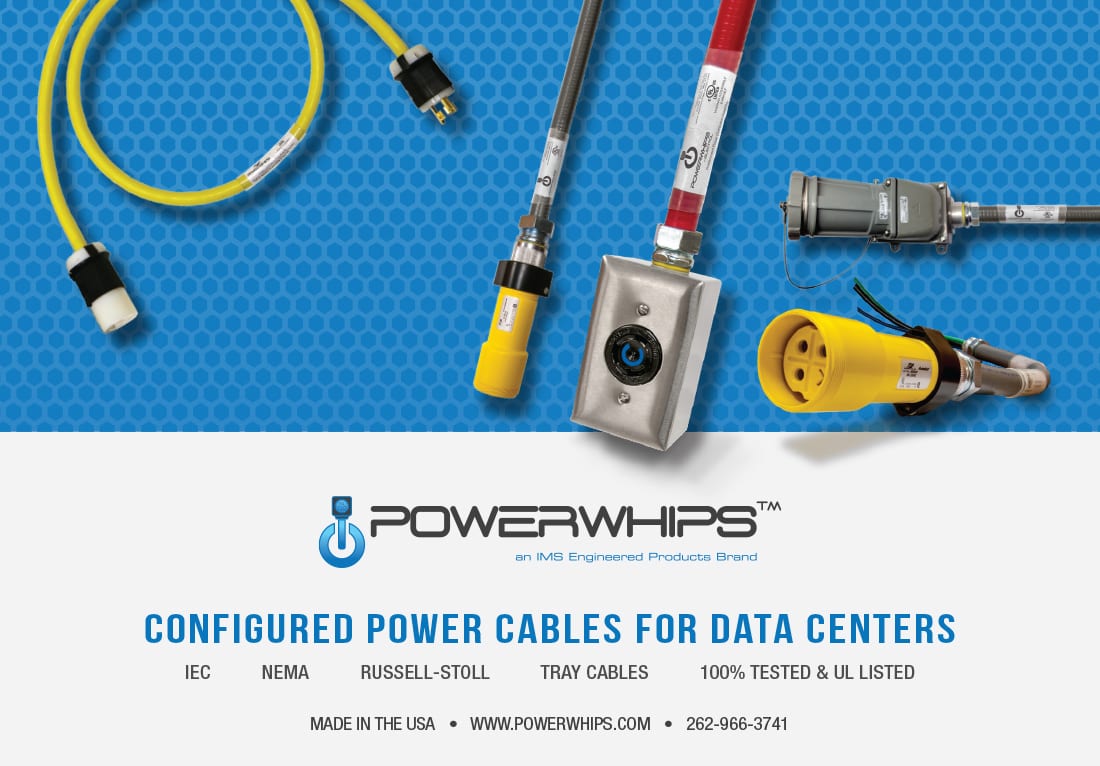2022 Top Tier Products of the Year Award Winners
Mission Critical’s 2022 Top Tier Product Awards showcase the best in DC power disaster preparedness, generators, power systems, routers, safety, security, servers, software, thermal management, and UPSs.
Change can go unnoticed. Other times, it’s obvious. Sometimes, you can see it or hear it. Sometimes it’s a feeling — tangible or not. But, like the Tracy Lawrence song reminds us, “The only thing that stays the same is everything changes” — lyrics that resonate with the mission critical industry.
That’s because change is happening everywhere — from the design and construction materials, IT equipment, HVAC systems, and backup power solutions to the software solutions, infrastructure, and security systems.
Industry professionals are faced with contradicting demands — process more data faster, do it with less environmental impact, and get it done yesterday.
Luckily for them, change drives innovation.
Google the word, and this pops up:
noun
- a new method, idea, product, etc.plural noun: innovations“technological innovations designed to save energy”
Was this example chosen to bring awareness to the seemingly impossible task mission critical manufacturers face? Who knows. But, what’s certain is that “technological innovations designed to save energy” are the inspiration behind the Top Tier Product Awards.
“The need for more sustainable solutions in the mission critical space is very dire,” said Sarah Harding, publisher, Mission Critical. “That’s why we’re proud to recognize the industry’s most cutting-edge products — innovations that will make it possible for us to reduce our carbon footprints safely, efficiently, and reliably at scale in a small space.”
This year’s contest embraces the very thing it was born of: change. New categories were introduced to reflect the current trajectory of the industry in order to identify those products that really are “ahead of the curve.”
The winners of Mission Critical’s 2022 Top Tier Product Awards offer the best in DC Power Disaster Preparedness, Generators, Power Systems, Routers, Safety, Security, Servers, Software, Thermal Management, and UPSs.
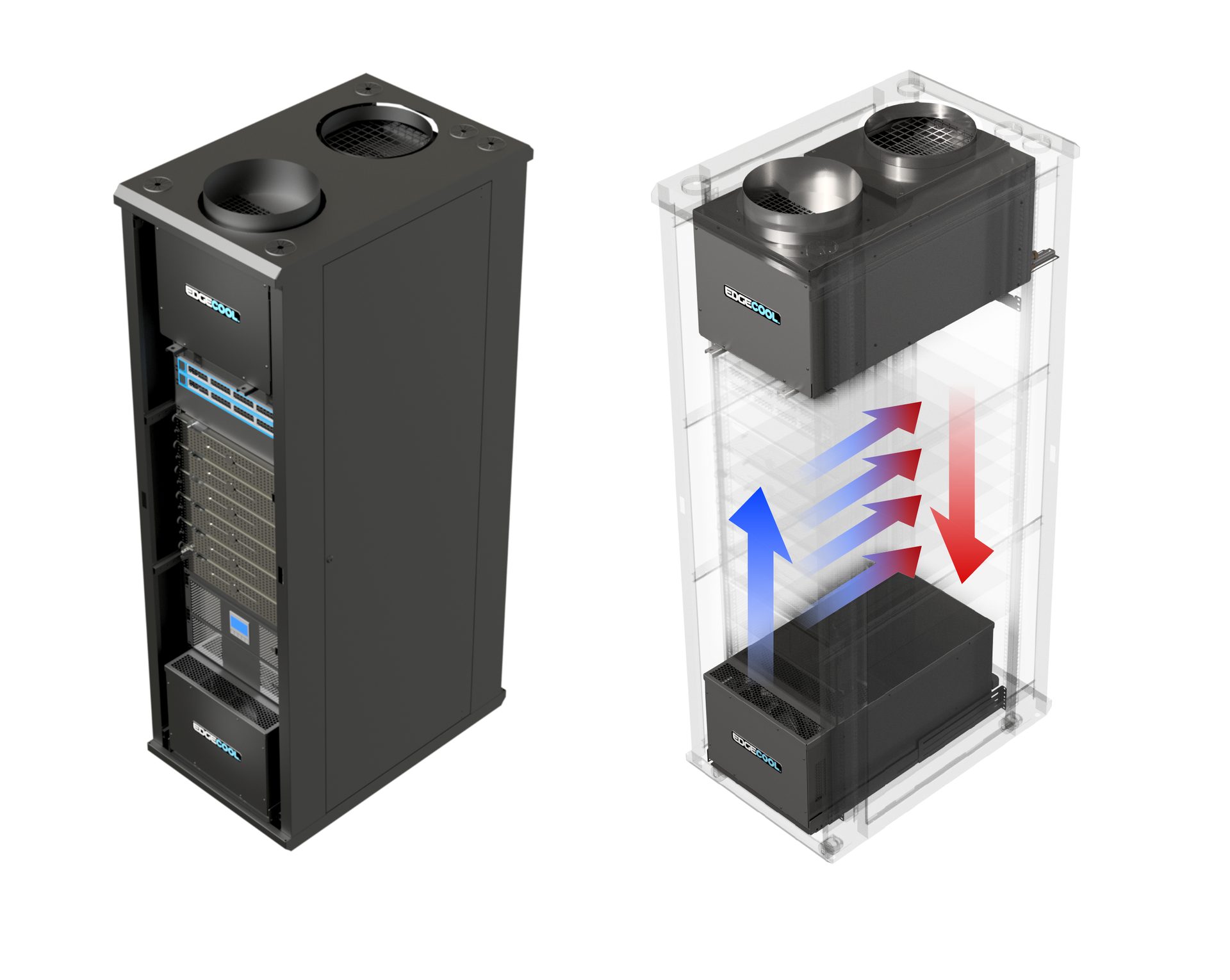
Image courtesy of Denso
Edge Technologies
EdgeCool 5 Series
Denso
The EdgeCool 5 Series transforms server racks into portable, energy-saving server rooms. The revolutionary split system air conditioner is designed for self-contained operation within any rack. EdgeCool units require no additional floor space and works with most new or existing server racks. EdgeCool brings data center cooling efficiencies directly to the rack level with its patented, powerful design that cools 4 kW of sensible heat load per rack while operating on standard 115 VAC power.
The evaporator unit installs in the bottom of a rack, occupying only 8U of valuable rack space while delivering cold air in front of overheated IT equipment. Inherent to its design, the evaporator separates the cold air from the warm air within the rack. EdgeCool ensures the coldest air is delivered directly to overheated circuits, while the warmest air is routed back to the air conditioner. A variable-speed fan adjusts to match the heat load inside the rack. This intuitive technology creates steady, cool temperatures and assures reliability to the network. Furthermore, Edgecool’s cooling reach can grow as well. The adaptable evaporator can expand its cooling envelope to three server racks. By opening up its side grilles it can direct cold air to equipment in adjacent racks.
The condenser unit’s role is to transfer heat from inside the rack safely away from the sensitive electronic equipment. There’s great flexibility on where the condenser unit can be installed, which provides end users with countless options when converting their existing standard rack, into a portable server room. To maximize portability of the air conditioned rack, the condenser unit can be installed inside rack. However, to maximize the space inside the rack for IT equipment, the condenser unit can be installed on top of the rack or nearby inside the room or building. The condenser’s airflow intake and exhaust are positioned at the top of the unit allowing for direct-to-ceiling ducting. Not only is this efficient, it also provides an unobstructed work area around the server rack for accessibility and ease when servicing the network.
EdgeCool is designed to cool mission critical equipment in any standard 19-inch server rack with little or no costly modifications to the rack. This allows end users to strategically place their important data centers almost anywhere. EdgeCool can be used as a primary air conditioner in small to medium data center settings or added to data centers of all sizes for supplemental or redundancy cooling purposes. Small data centers can be difficult to cool, oftentimes in remote locations throughout the building (think converted coat closet or small storage room). EdgeCool uses no additional floorspace, and it's minimal 8U of rack space design makes it an appropriate choice for any type of small data centers. Additionally, EdgeCool air conditioners are not lease-hold improvements, so end-users can take their cooling investment with them when moving to a new location.
Edge computing is a decentralized data center approach that brings computation and data storage closer to the sources of data. Edge computing improves latency response times, saves bandwidth, and helps meet regional data regulations. As its name suggests, EdgeCool is the perfect solution for micro data centers used in edge computing. EdgeCool’s flexibility allows micro data centers to be used in almost any environment without compromising cooling efficiency, physical security, and dependability. Edge computing is commonly used in a wide array of industries: health care, retail, manufacturing, construction, transportation, agriculture, and energy.
EdgeCool excels in the nontraditional data center space located on manufacturing and warehouse floors. The advent of high-tech manufacturing equipment on the production floor or automation equipment in high-volume fulfillment centers processing ecommerce orders, all require sensitive network equipment to be located in harsh environments. Protecting equipment from high temperatures and contaminants is simple by pairing an EdgeCool air conditioner with the appropriate National Electrical Manufacturers Association (NEMA)-rated industrial enclosure, eliminating the need for a data center all together.
The EdgeCool rackmount air conditioner was jointly developed by Denso and TechniCool Innovations Inc. (TCI). Both Denso and TCI have spent decades studying the evolving needs of IT and data center cooling. Denso is a world-renowned automotive supplier and manufactures the MovinCool line of portable air conditioners. Known for their uncompromising quality, MovinCool is a manufacturer of spot cooling solutions. For decades, IT administrators have relied on MovinCool for their data centers year-round or in emergencies, when the primary air conditioners have failed. TCI is an innovative engineering company that has specialized in the rackmount air conditioning market for more than 18 years. TCI has spent decades creating cooling solutions for data centers large and small. Watching the market grow and evolve, TCI developed a unique expertise in design and market requirements for a successful rackmount air conditioner. Out of this partnership, EdgeCool was spawned to bring high-efficiency data center cooling down to the rack level resulting in mass adoption rates across the small data center market.
Denso and TCI also partnered with other rack manufacturers to learn from the experts how to best integrate the EdgeCool air conditioner into their racks. One advantage of the split system design is to simplify the installation without interrupting the network. Edgecool can be easily installed to an existing, overheated rack, working around network equipment while keeping maintenance and servicing straightforward. EdgeCool is designed in accordance with the industry standard for 19-inch racks (EIA 310) to work with any rack manufacturer with little or no rack modifications required. Working closely with different rack manufacturers enabled Denso and TCI to design EdgeCool to effectively adapt to the subtle design differences that are inherent to the most popular brands on the market.
The EdgeCool rackmount air conditioner has a one-of-a-kind split system design for the condenser unit to be mounted within the rack itself providing end users with portability. Mounting the condenser unit in the rack also lowers installation costs when compared to other split system air conditioners that locate the condenser unit outside the building. Running power outside a building for the condenser unit drastically increases the cost of installation. Making openings in exterior building walls and roofs are costly as well and can lead to future leaks from outside elements. Furthermore, locating condenser units outside of buildings can reduce reliability and life of the air conditioning system due to extreme weather conditions. It is ironic when data centers overheat in middle of winter, when outside temperatures are below zero. A condenser surrounded with snow struggles to operate properly.
Finally, the split system design increases cooling efficiencies exponentially compared to a similar “packaged” rack mount air conditioner. The split system design lends itself to a closed-looped cooling cycle, where the internal rack air is recirculated inside the rack. This method of cooling is similar to a refrigerator; therefore, no energy is wasted on unnecessarily cooling the room.
The EdgeCool’s innovative design is backed by two utility U.S. patents. The first patent protects the integration of the condenser unit within the server rack, and how it transfers the internal heat away from the rack. The patented ducting method provides a simple and low-cost installation, and lends itself to accommodate most enclosed spaces. As a result of the condenser unit being installed within the rack, the EdgeCool is uniquely equipped with a powerful condenser fan capable of handling 1.0 IWG of static pressure for long duct runs to remove the heat being produced by the equipment inside the rack.
The second patent pertains to the option of having a high efficient economizer that eliminates mechanical cooling during the winter months. Similar to the “free cooling” concept that is a common practice for large data centers, the patented economizer offers the benefits of free cooling to an individual rack.
EdgeCool will change the mission critical industry by dramatically increasing cooling efficiency within small data centers while simultaneously expanding the definition of a data center. No longer will the data center be confined to four walls of a climate-controlled room. Small data centers across the United States consume 50% of the total energy used in all data centers, and are known to be highly inefficient when compared to larger data centers. In small data centers, the cooling can consume half of the total energy used and, therefore, can see great cost reductions by improving the cooling efficiency. EdgeCool unlocks the door to high-efficiency cooling for small data centers. New and existing data centers now have cutting-edge green cooling technology that previously was only available to large data centers. Furthermore, EdgeCool will provide edge computing with an environment-friendly cooling platform that will allow for rapid expansion of micro data centers that will support the next generation of technology.
The overwhelming success of the EdgeCool definitely lends itself to the development of other models. Denso and TCI have plans to roll out a 7- kW cooling capacity model, EdgeCool 7 Series, that will operate on 208-230 VAC power. The EdgeCool 7 Series is intended for server racks with higher heat load densities. Additionally, the EdgeCool 7 Series will pair well with small data centers with multiple racks totaling 7-kW heat loads or below. All EdgeCool units will feature side grilles that allow for one unit to cool multiple racks. Edgecool recognizes that data centers come in all shapes and sizes, therefore so will the revolutionary rackmount EdgeCool air conditioners.

Image courtesy of Kohler
Generators
Tier 4 Final KD Series Generator
Kohler
As the amount of data being created increases, the number of worldwide data centers will grow to support that demand. With that comes the increased need for reliable backup power — and an increasingly acute demand for power solutions that reduce environmental impacts wherever possible.
Kohler’s Tier 4 Final KD Series Generator provides a key advantage, resulting in minimal maintenance demands for optimized continuity and maximized ease for users — all while meeting strict EPA-controlled sustainability requirements. The KD exhaust aftertreatment technology eliminates the need for diesel particulate filters and diesel oxidation catalysts, leaving only harmless exhaust byproducts: nitrogen and steam. Meanwhile, the KD series engine control units and integrated sensors continually monitor and control all elements of the exhaust aftertreatment system, delivering exceptional emissions technology.

Image courtesy of Kohler
Data centers looking to achieve uninterrupted uptime and reliability for global data must rely on diesel generators. Yet, the pollutants associated with diesel engine exhaust are a challenge for this vital industry. As power demands grow, the need for robust generators is increasing, making their sustainability of the utmost importance.
Today, the EPA focuses on reducing six common pollutants (ozone, particulate matter, carbon monoxide, nitrogen oxides, sulfur dioxide, and lead), implementing increasingly stringent emission level standards. In response, data centers are always seeking greener solutions for their power strategies. Currently, however, most diesel generator strategies utilized by data centers still require multiple aftertreatment devices to meet the requirements of a number of different individual air pollutant standards. Of the six U.S. Environmental Protection Agency (EPA) pollutants, particulate matter (PM) and nitrogen oxide (NOx) emissions are often the most difficult to address.
To solve this challenge, Kohler’s innovative Tier 4 Final KD Series Generators reinvent the traditional system, allowing for minimal maintenance demands, optimized continuity, maximized ease for users, and greater sustainability results.
Describe the research that went into the design of this product: EPA focus on reducing six common pollutants (ozone, particulate matter, carbon monoxide, nitrogen oxides, sulfur dioxide, and lead) has led to increasingly stringent emission level standards.
Pollutants associated with diesel engine exhaust are a challenge for mission critical generators. As power demands grow, demand for robust generators increases, making sustainability of the utmost importance. However, most diesel generator strategies require multiple aftertreatment devices to meet requirements of each individual air pollutant.
PM forms from the partial combustion of diesel fuel in cooler parts of the cylinder, while NOx is the result of high cylinder temperatures oxidizing nitrogen in the air. Unfortunately, this creates an inverse relationship when it comes to in-cylinder engine management for performance and emissions — typically, harmful pollutants are created no matter what changes are made.

Image courtesy of Kohler
To address this industry challenge, Kohler ran a recent study concluding that some of today’s diesel generators can be safely run at 30% of the rated capacity or higher as little as once per year as opposed to once per month while maintaining optimal performance and staying within emissions guidelines. In fact, the savings from switching from monthly to annual loaded testing were compelling – our tests showed an 82% reduction in total pollutants emitted.
As the EPA introduces increasingly stringent restrictions for emergency engines, engine manufacturers are challenged to rethink engine architecture to comply with the regulation. Meeting these guidelines has caused some hesitancy in the marketplace for Tier 4-certified systems due to added complexity, increased cost, and limited familiarity.
The KD Series Tier 4 Generators represent a huge step forward for the data center industry because they reimagine how generator maintenance and sustainability can be accomplished. An array of innovative solutions within these generators help overcome previous maintenance challenges and not only ensure the ease and longevity of the generator’s operation but also help data center operators easily meet increasingly stringent government-mandated sustainability metrics.
The flexibility, simplicity, and durability of the KD Series Tier 4-certified generators ease many of these concerns, bringing down barriers to greener power solutions and enabling customers to create a more sustainable future even as they increase their power requirements. This will empower more users to meet increasingly strict emergency-use emissions standards.
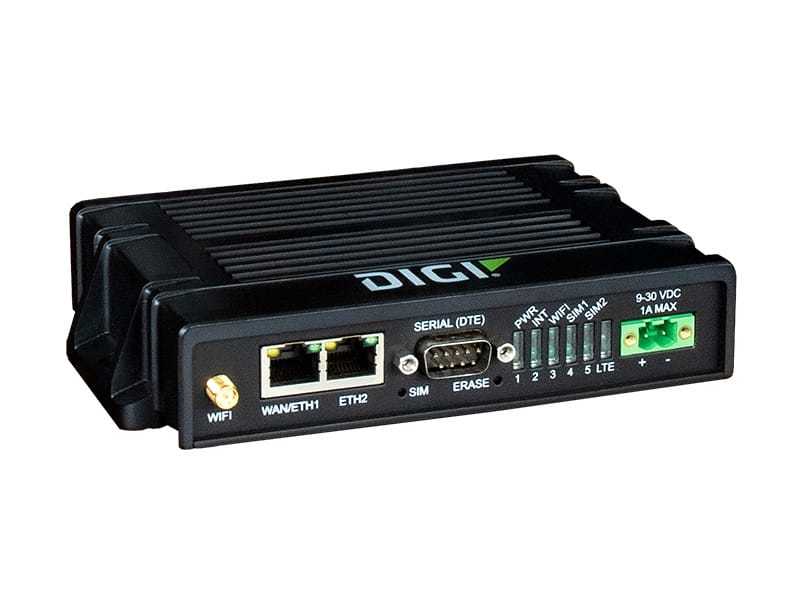
Image courtesy of Digi
IT Equipment
IX20 4G LTE Router with 450 MHz
Digi
The high-performance architecture of the Digi IX20 router provides automatic and software-selectable primary and backup WWAN connectivity over multi-carrier cellular LTE. Digi IX20 supports advanced security (stateful firewall, MAC filtering, and VPN), cellular redundancy, and management (SNMP, event logging, analyzer trace, and QOS), facilitating use in PCI or NERC-CIP compliant applications. FirstNet Ready models are designed to meet the demands of primary responders for critical communications.
The Digi IX20 router with 450-MHz support is a full-featured, ruggedized cellular router that supports use in mission critical applications, such as utilities and public safety. The IX20 platform offers interchangeable Core Modem’s that can quickly adapt to customers’ needs and market opportunities. It comes equipped with standard two Ethernet ports and one RS-232 serial port with an option for Wi-Fi. This particular router model comes equipped with 450-MHz band support that provides increased coverage and better signal penetration, including in-building/indoor and underground deployments.
The key to critical communication systems is secure, reliable, and deterministic network connectivity. The Digi IX20 router is ideal for use in smart grid, smart city, and rural connectivity applications. In use cases like smart meters or EV charging stations, where the equipment is in geographically dispersed locations and in buildings, underground or both, the licensed 450-MHz band with its relatively low frequency compared to other cellular bands, increases range, and improves building and underground penetration.
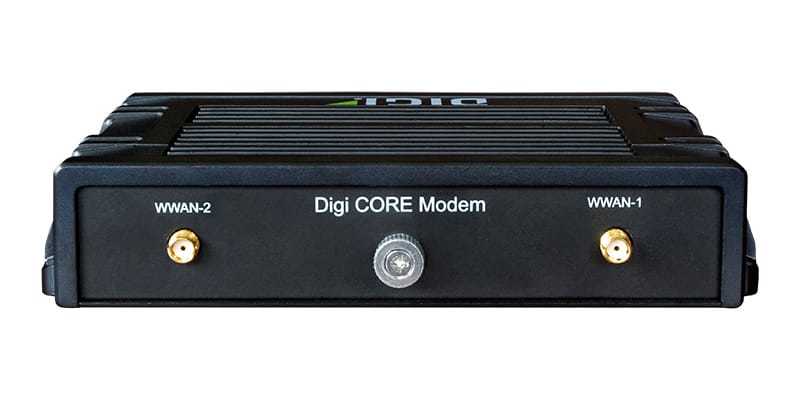
Image courtesy of Digi
Ken Bednasz, senior director of engineering for cellular products, Digi, wanted to select the correct platform that balanced performance and cost. The IX20 lineup is known for its ruggedized exterior. Because the routers are built for mission critical applications, the Digi team conducted various tests to ensure that the routers could withstand extreme temperatures (-40° to 70° C) and measure the level of the cellular capabilities through manipulating RF to help simulate real-world scenarios.
One important feature that makes the IX20 router so unique is the interchangeable Core Modem, which provides the ultimate flexibility because cellular technology is constantly evolving.
“Take, for example, 5G deployment,” Bednasz said. ”By using our routers, when customers decide that they want to upgrade their equipment, we are able to make it happen with little to no interruption."
Second, because the router operates on a lower frequency, radio waves can better penetrate obstacles, such as foliage or buildings.
The IX20 router with 450 MHz band support can operate in both urban and rural environments. Customers operating in urban environments don’t need to worry about crowded radio waves and network disruptions. For rural customers, it can mean cost savings because they don’t need as many cell towers to efficiently operate.
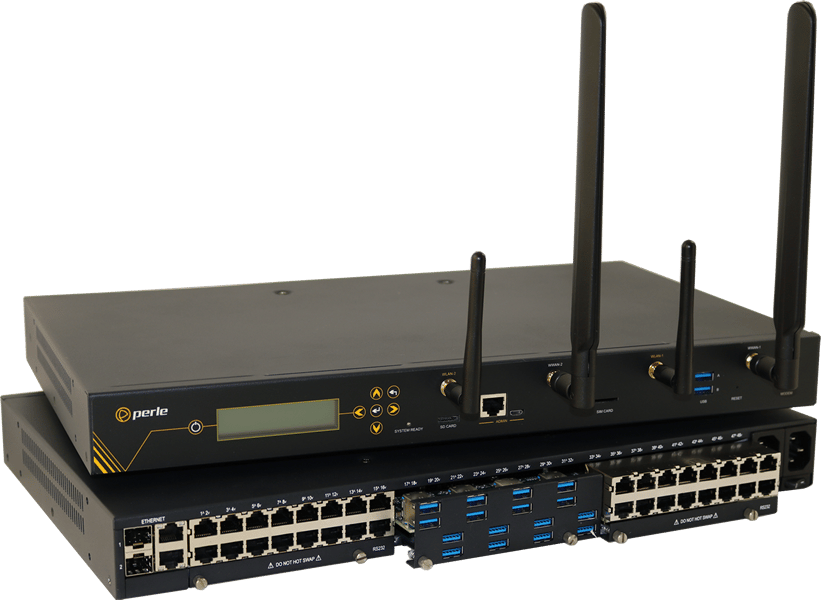
Image courtesy of Perle
Management Systems
IOLAN SCG LWM Secure Console Server
Perle
Perle IOLAN SCG LWM Console Servers provide data center managers with secure out-of-band console management of any device with a serial RJ45 or USB console port.
When network administrators need to monitor, manage, troubleshoot, or reboot critical IT assets, they will generally access the devices directly over an Ethernet network. However, when continuous uptime is expected, this single point of access is not enough. All data centers need a secure, dedicated alternate access method into the IT network infrastructure to administer connected devices and assets without using the corporate LAN. This is the only way to gain access to critical equipment when the network is down or a device is turned off, in sleep mode, hibernating, or otherwise inaccessible.
The IOLAN SCG LWM Console Server provides four dedicated alternate access methods to the IT network infrastructure.
- Built-in, high-speed LTE with High Speed Packet Access + (HSPA)+, universal mobile telecommunications service (UMTS), EDGE, and general packet radio service (GPRS)/global systems for mobile (GSM) fallback networks to protect against wired LAN failure. It can also be used to transmit serial data or establish a direct serial-to-serial peer connection over cellular networks. This is ideal when devices are located where hardwired Ethernet connections are not available but cellular networks are.
- Built-in Wi-Fi network access over dual-band radio antennas for optimal wireless performance, signal reliability, and range.
- An on-board RJ11 V.92 modem connection for secure and reliable out-of-band connections over a POTS network.
- Dual 10/100/1000 Ethernet connection for redundant copper and SFP fiber network access with automatic failover if the primary link goes down.
The IOLAN SCG LWM Console Server keeps data centers secure with functionality that includes full routing (routing information protocol [RIP], open shortest path first [OSPF], and border gateway protocol [BGP]) capabilities; zero-touch provisioning (ZTP); two-factor authentication (2FA); integrated firewall; advanced failover to multiple networks; AAA security features; remote authentication dial-in user service (RADIUS), terminal access controller access-control system (TACACS+), and lightweight directory access protocol (LDAP) authentication; and other data encryption tools.
Console ports are among the most reliable and dependable forms of communication for equipment management. Whether it is a router, switch, firewall, PBX, server, security appliance, or network storage device, the serial auxiliary or USB console port is always up and running, no matter what is happening with the device. It is a trusted way to find out what is going on and the quickest way to recover and minimize financial losses associated with network downtime.
The modular IOLAN SCG LWM Console Server provides any combination of up to 50 USB and serial RJ45 console management ports for secure access to connected devices as if a user is locally connected to the COM port. The integrated LTE Cellular, Wi-Fi, or V.92 modem also provides direct out-of-band access into each individual rack.
Data centers have thousands of devices located across multiple sites. To simplify management and respond swiftly to issues, network administrators require access to all console ports via a single portal view. Perle's cloud-based centralized management solution puts the IT infrastructure into a single application and provides secure reliable access and visibility during normal operations and critical network failures. Scalable to suit any business requirement, Cloud Centralized Management reduces human error and is designed to guarantee repeatability.
In designing the hardware and software, Perle worked with strategic accounts to understand the needs of large data center deployments. During the research process, it was determined that multiple points of resiliency to deal with new points of failure or vulnerabilities needed to be addressed. In addition, the firmware upgrade process for the IOLAN SCG had to be designed with remote access monitoring and provisioning at its core. When deployed top-of-rack, or at remote locations, data center administrators should have secure access to all equipment as well as automated provisioning of configuration and firmware files.
For decades the RS232 RJ45 port has been the standard for console admin port access. Now, IT equipment manufacturers are delivering devices with USB Console Admin Ports. The modular design of the IOLAN SCG supports both types of admin ports in one Console Management solution.

Image courtesy of Danfoss
Power Solutions
VACON NXP DCGuard
Danfoss
The Vacon NXP DCGuard is a device that maintains the safety and stability of a DC grid system by detecting and cutting off any faulty direct currents (DCs) within 50 microseconds and, thereby, protecting the surrounding equipment by preventing brownouts associated with typical fuse or breaker protections that take up to 100 times longer to trip. Further, it enables connection of two different DC grids with voltage differences, and, more importantly, prevents accidents and injuries.
The semiconductor protection device is based on standard VACON NXP inverter hardware and new software. During a short circuit, the VACON NXP DCGuard disconnects the healthy side from the faulty side before the short circuit affects the healthy side. The fast isolation ensures the healthy side can continue to operate as normal after the short circuit situation. This enables a secure DC grid and is a key enabler for DC networks used in many different applications, such as data centers, commercial buildings, or factories.
Short-circuit handling has been one of the hurdles for wider usage of DC power supplies and distribution in data centers as it is difficult to ensure the required system functionality by using fuses. Therefore, data center owners and operators have not harvested the advantages of using distributed DC power distribution systems. The VACON® NXP DCGuard™ protects their efficient investments and allows them to employ DC power systems safely and with peace of mind.
The design process began with research on DC systems and their existing challenges. We looked at customer issues with existing systems, particularly with long delays for fuse burning and circuit breaker trips. To gauge if systems could respond more quickly, the company conducted an analysis of IGBT and current sensing and developed application parameters to create faster response using traditional VFD hardware, including the need for additional reactance on the DC bus. The final step was testing and certification for certification bodies in order to develop a unique solution for the markets that keeps DC distribution systems active during a fault condition, which previously would have blacked/brown – outed or caused ancillary damage.
It is a new way of approaching system fault currents in DC grids. Unlike a fuse, the VACON NXP DCGuard can easily be reset and restarted once fault conditions have been removed.
This will remove barriers for end users who are reluctant to switch to more efficient DC systems due to concerns over short circuit fault currents. It helps to enable a transition of efficient energy management of multiple power sources by reducing losses associated with AC to DC grid conversion.
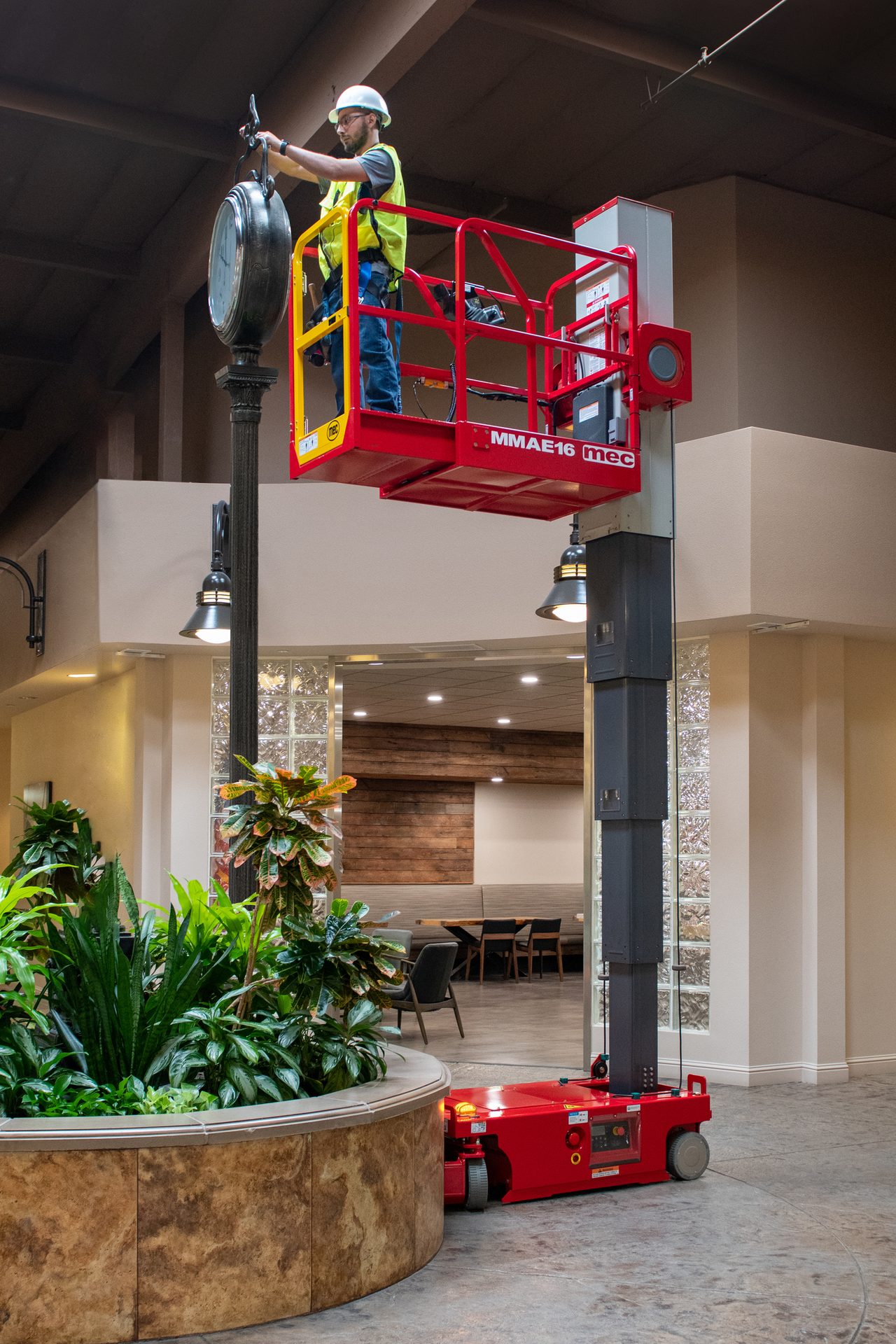
Image courtesy of MEC
Safety
Mast All Electric 16 Foot (MMAE16) Mobile Elevating Work Platform (MEWP)
MEC Aerial Work Platforms
MEC boasts an eco-friendly solution to make work more efficient and more productive with its MMAE16. The all electric design is ideal for mission critical environments because no hydraulic oil means zero possibility of leaks.
The MMAE16 can operate for 9.5 hours on a continuous “Peter Hird”-type battery duty cycle test.
“To put it into perspective, it gives you three full shifts with less charging time through power savings and longer duty cycles,” said Barry Lawson, marketing manager for MEC. “The MMAE16 reduces the electrical energy need for customers to assist with sustainabilty initiatives, and, with longer duty cycles on the charge, it provides an eco-friendly alternative to other machine options without having to compromise productivity or performance.”
The stored battery energy is used as efficiently as possible, and the low-stowed platform height increases safety and decreases operator strain and fatigue.
“The trend to deliver more eco-friendly mobile elevating work platforms (MEWPs) into mission critical industries will continue to grow,” Lawson said. “Whether it is data centers, food processing plants, or pharmaceutical applications, the need for a cleaner solution has arrived, and MEC’s MMAE16 meets that need. Complete elimination of a potential hydraulic oil spill is a significant turn for the industry.”
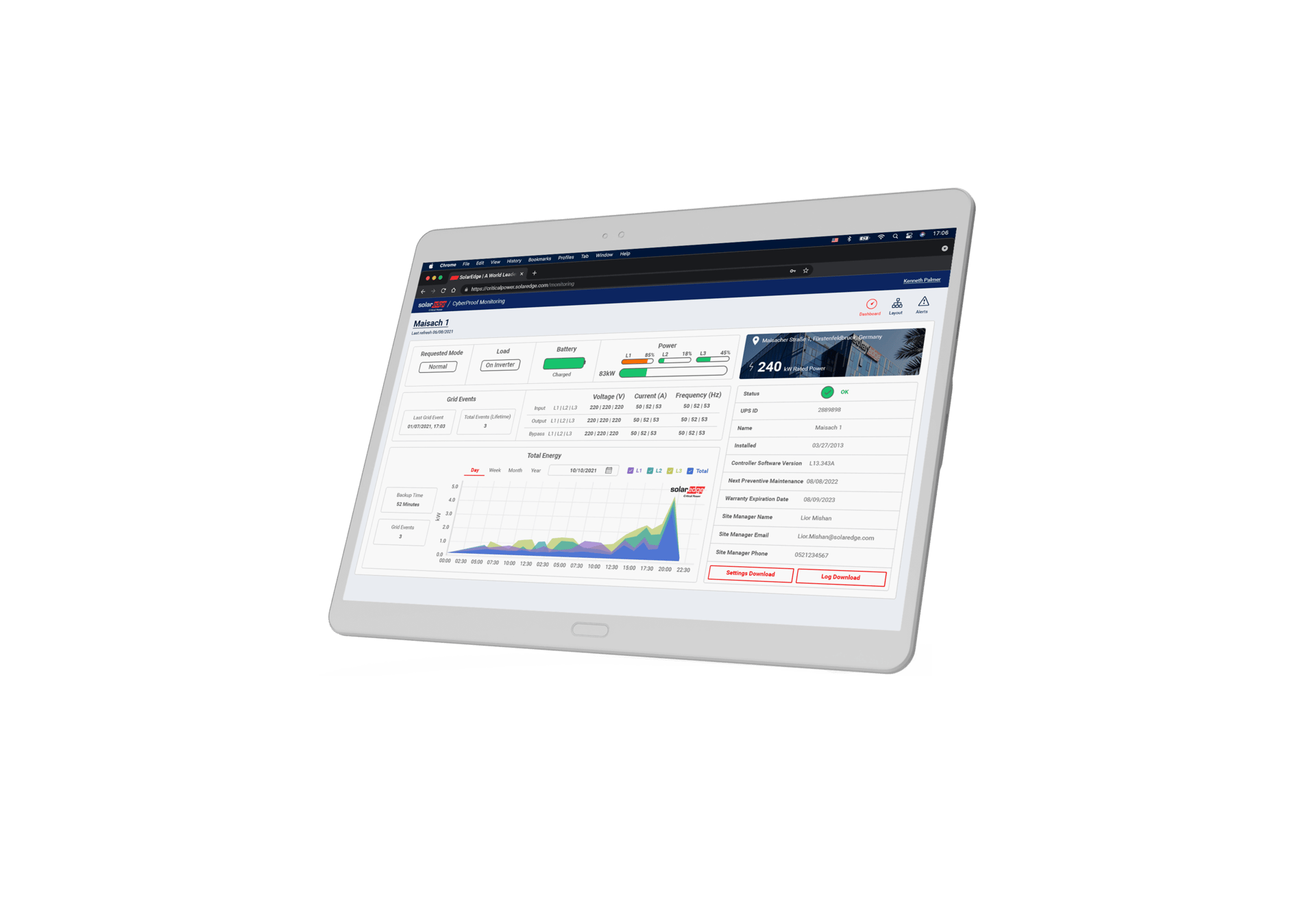
Image courtesy of SolarEdge
Security
CyberSecure Monitoring
SolarEdge
The CyberSecure Monitoring solution by SolarEdge is among the world’s first integrated hardware-based cloud monitoring solutions for critical power infrastructure. It provides ultimate peace of mind for users by allowing to remotely track and analyze the performance of their UPS systems from outside the premise of the site, consequently eliminating system downtime without posing any cyber risk.
The solution includes a security dongle (the sender) that communicates to an external optical transmitter (a gateway), which is connected to the cloud via a segregated, independent cellular-based network. Harnessing optical physics, the security dongle, which acts as a data diode, physically ensures that data can only be transmitted by the UPS, and it’s impossible to alter or harm the performance of the UPS and the critical power equipment connected to it. Moreover, it ensures there’s no risk of organizational data corruption or stealing, nor exposure to ransomware attacks, because of vulnerabilities in the UPS system, contrary to the ever-posing risk with software-based cloud monitoring solutions.
Each gateway can support up to five UPS units, each with its own security dongle, allowing scalability and centralized UPS management.
The technology, previously only available for military applications, is now, for the first time, available for smaller businesses at an affordable price.
The CyberSecure Monitoring is designed to allow UPS alert notifications, performance tracking, and log analysis – all from outside the premise of the site without posing any cyber risk. Such a solution is suitable for any UPS application, but it’s particularly suitable for edge applications of larger organizations with multiple UPS systems, possibly spread across site(s), that do not have on-site staff looking at the systems 24/7. The product allows the organizations’ service companies to access UPS data remotely without granting them access to the corporate network.
The scope of effort included bringing together multiple technological disciplines to create an end-to-end solution. Initially, a research of different one-way communication technologies was conducted, including in-depth study of the optical technology that was ultimately implemented, balancing transmission distance, data rates, cyber penetrability, and cost.
Based on the technology selected, all system components, including a USB transmitter, receiving gateway, and cellular modem, were developed. To achieve this, system, electrical, and mechanical designs were done in tandem to solve product and implementation constraints. Software development was done on three different platforms: UPS, gateway, and AWS cloud, each with individual backend and front-end developments, and integrated together to create an end-to-end dataflow that is robust to communication failures, efficient in cellular data usage, and protects the UPS from all security risks.
Hardware qualification and software testing were done to verify product compliance and long-term functionality. The product was designed for mass production, and with the ability to be adapted to multiple installation scenarios and prolificate this unique solution across the UPS market.
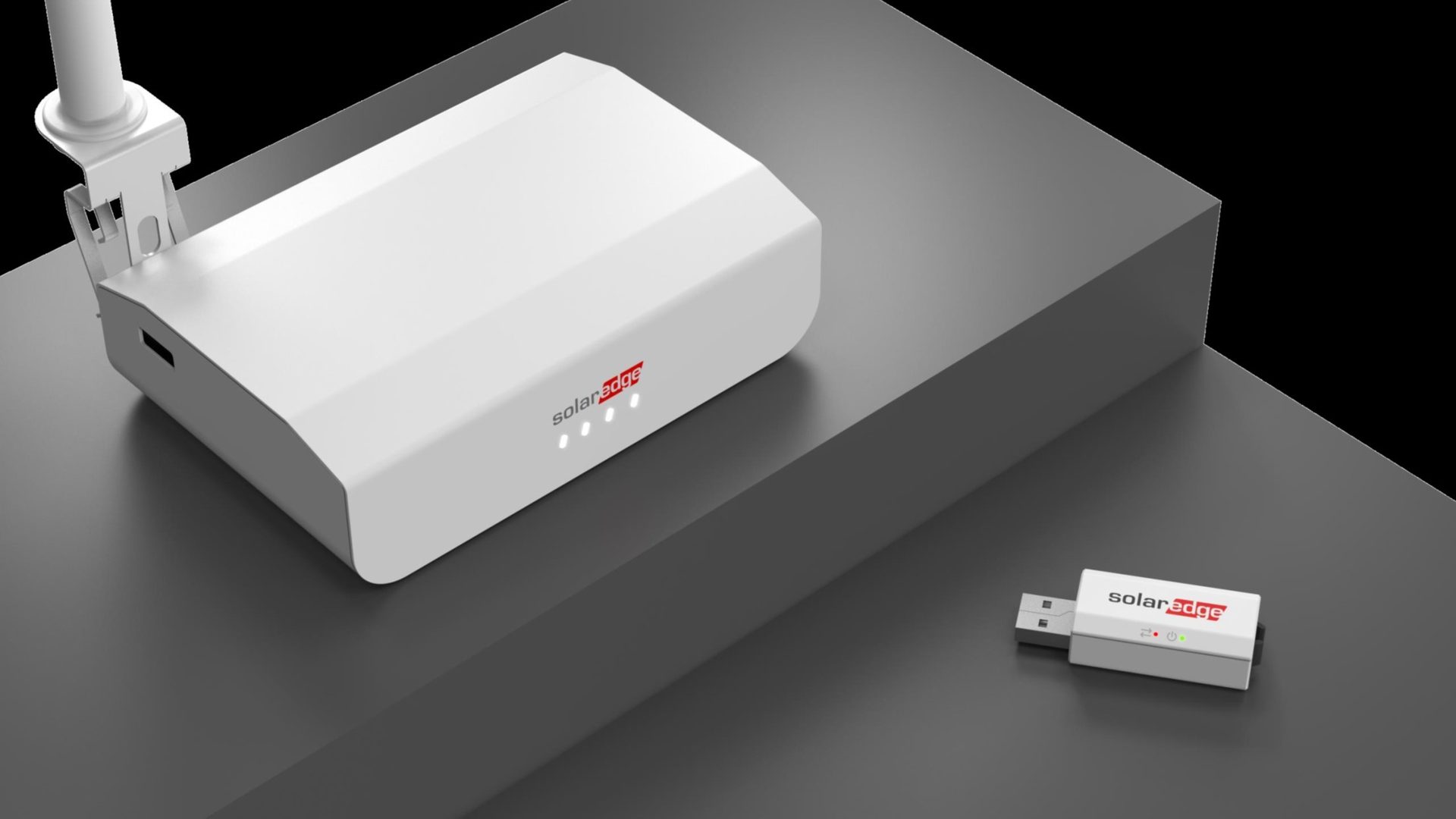
Image courtesy of SolarEdge
Current remote UPS monitoring solutions are based on connecting UPS systems directly to the corporate network, relying on software protocols to ensure single-direction communication and avoid unsafe system manipulations. However, secure as it may be, no software is 100% vulnerability-free or hacker-proof. Programs are written and implemented by humans and are inherently imperfect. Therefore, direct network connection, which cannot physically block communication back to the UPS, poses a cyber-threat and jeopardizes power continuity and quality.
SolarEdge’s CyberSecure Monitoring provides protection by physics. It introduces a new concept of cloud monitoring connectivity with unparalleled safety. The hardware-based infrastructure eliminates communication back to the UPS, making sure no damage or alteration to the UPS or connected equipment can be done.
Similar technological concepts exist in other highly confidential industries, such as military, and are typically very expensive. Now, for the first time, a hardware-based, secure, cloud-monitoring solution is being introduced to the UPS market at an affordable cost.
Traditional critical power cloud-monitoring solutions are software-based and, therefore, hackable. Hence, businesses were typically reluctant to implement remote monitoring of their UPS systems in order not to compromise the cybersecurity of their equipment and data.
And, while technological solutions that can allow safe remote connection are available, they are often considered very expensive, thus limited for very few segments, usually military or government ones. Previously, affordable hardware-based solutions were nonexistent to the mission critical industry.
CyberSecure Monitoring is presenting a paradigm shift in cybersecurity for critical equipment and introduces a new standard for UPS operability. Facility/property managers, IT managers, and electrical infrastructure owners will now be able, without taking any cyber risk, to know at any given moment and place the status of their backup systems and take measures as needed. Also, actual consumption information, often not available, will now be conveniently communicated to them, allowing more robust operation and better planning.
Being able to remotely track and diagnose UPS systems offers tremendous value to all stakeholders and can transform the business of UPS service providers. They will be able to significantly reduce their costs by avoiding unexpected site visits, initiating proactive repair visits, and combining proactive repair visits with preventive maintenance activities or with other nearby visits.
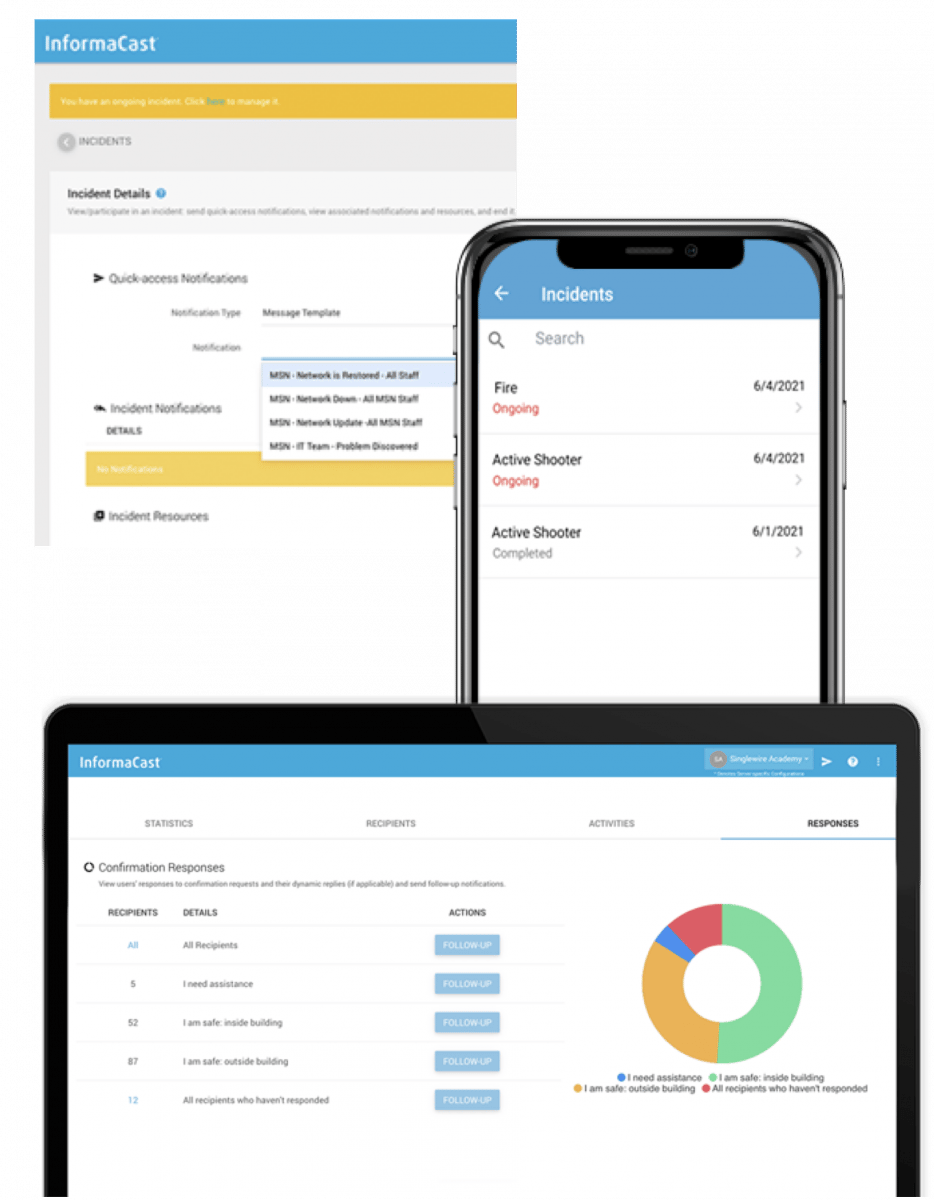
Image courtesy of Singlewire Software
Software
InformaCast Fusion 14.0.1
Singlewire Software
InformaCast with Incident Management is mass notification and critical event management software that allows users to group all of their messages and resources under specific scenarios. When an organization encounters an event that could impact its mission critical operations, it can open the scenario and have everything it needs at its fingertips. This can include the initial alert, follow-up messages, and “All Clear” messages to signal the event has been resolved. Users are also able to upload relevant resources into the incident hub to help give safety team members all the information and assistance they require to easily manage the situation. This can include safety checklists; building floor plans; and links to external resources, like security camera feeds. When the incident is over, a report is created that allows users to review how the event was managed and inform future adjustments to ensure the most effective response possible.
The incident management capabilities add to the already robust mass notification software that gives organizations the ability to reach all of their on-premises and mobile devices with mission critical messages from a single interface. The system leverages text, audio, and visual alerts that can be delivered to IP speakers, IP phones, desktop computers, digital signage, mobile devices, and more to ensure no one misses a message during a crisis event. Messages delivered using InformaCast can be triggered with the push of a button via a physical or virtual panic button, mobile app, keyboard shortcut, monitored email address, RSS or CAP feed, or wearable device as well other systems and devices that make it quick and easy to get the word out. When an emergency occurs, the two most important factors are speed and reach, and organizations can improve both with InformaCast to help keep everyone safe and informed.
InformaCast with Incident Management offers a wide range of applications, and its flexibility makes it particularly well-suited to help organizations handle any mission critical situation they may face. When organizations plan for disruptive events, whether it’s an active shooter, severe weather, or medical emergency, they can use InformaCast to build text and audio messages for every stage of their response and group them in an easy to recognize scenario that can be accessed from a web interface or mobile app. The moment an incident occurs, every step of the response plan is laid out within the software so no one misses a step that might leave someone out of the loop on information that may impact their safety.
Thousands of organizations around the world that cover health care, manufacturing, government, and enterprise businesses, as well as education institutions and retail, are finding unique applications to help them manage events effectively. With the ability to reach on-premises and mobile devices, InformaCast can reach people whether they are at their desks, on the plant floor, or away from the main facilities. This helps get people out of dangerous areas and prevents unaware people from entering them.

Image courtesy of Singlewire Software
InformaCast also offers a number of automated functions that work in tandem with its notification and incident management capabilities. With integrations into gunshot detection devices, eyewash stations, and AED cabinets, system administrators can get the context they need around an event the moment it happens, speeding up the incident management process. At the same time a notification goes out, a production line can be shut down, doors can be locked, or strobe lights can be activated reducing the risk for people in the area.
InformaCast with Incident Management was created as a result of an intense analysis of what was currently available on the market and conversations with customers who have asked us to provide them with this kind of solution. The biggest demand was simplicity. They wanted something that was easy to activate, recognize, and follow for someone who might not use the system every day. They wanted reporting capabilities, and they didn’t want to search through all of their messages just to find the one that was right for the situation they were facing.
The software allows organizations to build scenarios that surface as a customizable tile on the home screen of the interface. They can select colors, icons, and text to make scenarios instantly recognizable. For example, they can now build a red tile with a flame icon and label it “Fire” to make it obvious that this is the scenario to use in the event of a fire in their building. Within the scenario, live, pre-built message templates that are specific to that event. They no longer need to parse through irrelevant messages to find the ones they need. They also have more than just their messages to help manage the event. Floor plans, safety checklists, and other resources can be uploaded ahead of time or as the event unfolds to provide additional assistance and context about what is happening and the best actions to take. When an incident has concluded, a report is automatically generated that helps organizations understand the effectiveness of their response so they can make appropriate adjustments for the future.
InformaCast with Incident Management provides end users with a way to group all the resources they need to manage an incident under a single umbrella and add value to existing technology investments by making existing devices and systems critical components of their safety plan. InformaCast with Incident Management gives end users a safety tool that helps bring together disparate devices and systems and associates similar messages with a related incident. Users are also able to upload relevant resources into the incident hub to help give safety team members all the information and assistance they require to easily manage the situation. This can include safety checklists; building floor plans; and links to external resources, like security camera feeds.
It is also one of the only mass notification solutions on the market to allow organizations to manage and send alerts to mobile and on-premises using a single interface. This means when a mission critical event takes place, system administrators do not need to waste time logging in and out of different systems to get messages out. They can reach all devices with just a few clicks or the push of a button.
In addition, InformaCast is one of the most flexible solutions on the market. Because it offers a wide range of integrations and message customizations options, InformaCast can be utilized in any industry to provide relevant updates that keep operations running smoothly. Following a notification, key stakeholders can be invited into virtual collaboration spaces or onto a conference call to assess the situation and deploy a response. This helps gather the right people quickly so situations can be resolved without delay.
In addition to mission critical capabilities, it can also be used for regularly scheduled announcements, like shift changes. This adds value to the system as it can be used for more than just emergencies to improve efficiencies around daily communications.
InformaCast Fusion with Incident Management changes the mission critical industry by offering a simple, all-in-one solution for vital communications and incident management needs, leveraging on-site devices to help share information during an incident, and providing after-action reports when an incident has ended. This simplifies the incident management process by avoiding the need to log into and activate multiple systems, and provides relevant, useful information and resources that can be used to resolve an incident as quickly as possible.
InformaCast offers organizations the opportunity to reach more people more quickly when time is of the essence. It helps streamline processes and procedures so less time needs to be spent getting the word out and more time can be spent managing the situation to get it resolved. By being able to reach on-premises and mobile devices, and offering options to trigger notifications from anywhere, organizations can have the confidence that the moment an incident occurs, notifications will be sent to everyone who needs to be in the know. The more awareness and context there is around a situation, the less confusion and panic there is, providing a more stable environment to keep people safe and operations going.
InformaCast is updated every six weeks with new features, bug fixes, and other improvements. The team behind InformaCast is not content standing still and is always on the lookout for new integrations and features that make the tool more useful for mission critical applications. Future generations of the product will include a mobile panic button feature, integration with wearable panic buttons, rostering capabilities, and more detailed reporting functionality so organizations can better understand the effectiveness of the messages they are sending. The system is designed to be flexible and adaptable to address any situation, so should unforeseen threats arise, organizations have a future-proof solution to help them meet any challenge they may face.
Video courtesy of Singlewire Software
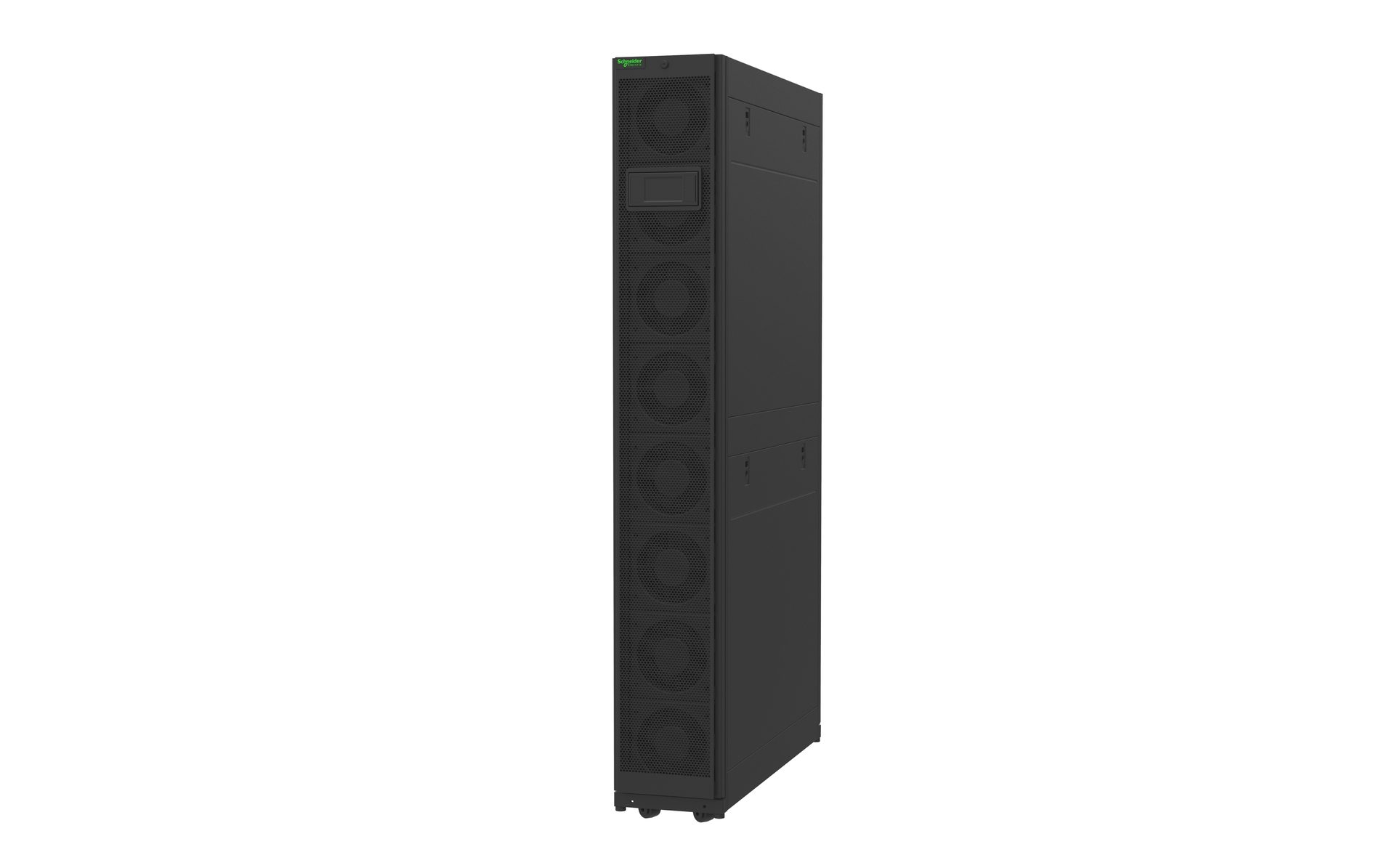
Image courtesy of Schneider Electric
Thermal Management
InRow Economizer 300mm Series
Schneider Electric
The InRow Economizer 300mm series is the newest close-coupled cooling solution from Schneider Electric and an optimal choice for edge and enterprise customers. It is available in economizer, twin-cool, air-cooled, and water-cooled options. The series consists of both indoor and outdoor parts. The Indoor (ACRH301S / P) is twin coil InRow and the outdoor (ACHU300 / 300-L) is a water-cooled condensing unit. It is available for data centers, edge data centers, and micro data centers.
The InRow Economizer 300mm series is designed for mission critical applications and data centers.
The research involved in the design of the product centered around finding ways to achieve unmatched efficiency and versatility. It was ensured that the coil design for free cooling would be in compliance with Title 24 for North American markets.

Image courtesy of Schneider Electric
The unlimited energy efficiency and powerfully compact design makes the new InRow Economizer unit one of the most versatile and predictable cooling systems for next-generation energy efficiency and green (low carbon emission) data centers. Its integrated economizer provides free cooling, low power usage effectiveness (PUE), and increased return on investment (ROI). It includes up to 22-kW cooling capacity and a 120-m distance from InRow to the condensing unit, attributed to the compactness of the design. Marked as Green Premium Certified, it has a high energy efficiency and low carbon footprint, aligning with Schneider Electric’s commitment to delivering products with exceptional environmental performance. The Green Premium promises compliance with the latest regulations, transparency on environmental impacts, and circular and low-CO2 products.
The InRow Economizer’s sustainable design sets the standard for environmental responsibility within the mission critical industry. Additionally, the InRow Economizer promotes innovation within the industry through its many unique and useful features, which include maximum distance between the InRow and outdoor unity, the condensing model used to avoid water outside the white / IT space, its high-pressure components located outdoors, and high efficiency throughout. The InRow Economizer’s white space contains no oil and requires almost no service (the compressor check, VFD check, fire work to replace critical components, etc., happen outside of the whites pace).
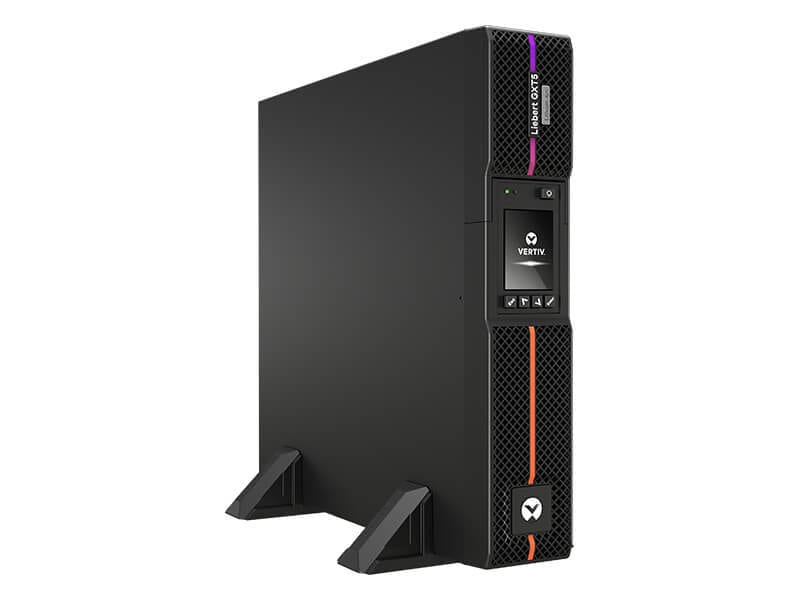
Image courtesy of Vertiv
UPSs
Vertiv Liebert GXT5 Lithium-Ion
GXT5LI-1500LVRT2UXL
Vertiv
The Vertiv Liebert GXT5 Lithium-Ion is a true online double-conversion uninterruptible power supply (UPS) with lithium-ion internal batteries that has been engineered to fully isolate critical IT from power problems. The lithium-ion batteries in the UPS are expected to last up to three times as long as traditional valve regulated lead–acid (VRLA) UPS batteries, resulting in a lower total cost of ownership and, for many customers, eliminating battery replacements altogether. The Liebert GXT5 Lithium-Ion UPS provides exceptional runtime on the internal battery with up to 14 minutes of runtime at full load. Each UPS also supports up to eight external lithium-ion battery packs to extend battery runtime for critical operations requiring longer battery runtimes.
The Liebert GXT5 Lithium-Ion offers several key benefits, including:
- The lithium-ion battery is more resilient to high temperatures than a VRLA battery, which is ideal for environments without dedicated cooling.
- The internal UPS battery offers industry-leading runtimes (up to 14 minutes at full load) to ensure availability of critical applications during an unexpected power loss.
- It is certified to meet industry UPS and lithium-ion safety standards such as UL 1778, UL 1973, and UL 1642, which ensures it's safe to use in critical IT environments.
- Hot-swappable, user replaceable internal batteries allow for the easy replacement of the batteries, if needed, without disrupting power to the connected equipment.
- Out-of-band management provides remote visibility of the UPS even with a lost primary network communication.
The Vertiv Liebert GXT5 Lithium-Ion UPS is engineered to protect critical network and distributed IT. It is an online double-conversion UPS that provides the highest level of power conditioning and power protection for critical business IT systems, such as network equipment and business servers. This ensures that mission critical systems and applications are protected in the event of any utility power problems, such as power surges or a complete loss of power. The Liebert GXT5 UPS protects against the widest range of power problems and seamlessly switches to battery backup if the quality of the input power is outside of acceptable operating levels. The UPS is widely adopted across many industries including education, health care, retail and wholesale, manufacturing/Industrial, government, telecom, banking/financial/insurance, transportation, and broadcast and entertainment.
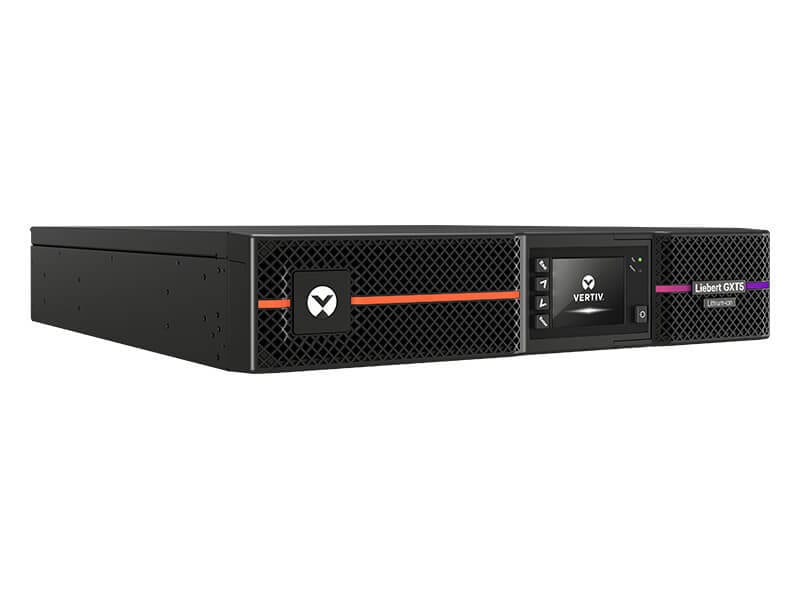
Image courtesy of Vertiv
Vertiv’s research, based on interviews with customers over time, has revealed several common challenges among edge data centers and distributed IT environments.
The top three are:
- Higher temperatures, typically caused by the lack of dedicated cooling;
- Increasing operating costs; and
- Limited IT resources.
The VRLA battery in traditional UPS systems compounds these issues for edge deployments as they are sensitive to high temperatures and commonly require battery replacements every three to five years. VRLA battery replacements are a serious burden on budgets when considering the cost of downtime, labor costs, and the cost of a new battery. They are also very heavy and require special care and planning to replace, which can be difficult when IT personnel aren’t on-site.
By moving to a UPS with lithium-ion batteries, the Liebert GXT5 Lithium-Ion provides an immediate solution to each of these problems to help prevent downtime. Lithium-ion is more stable in higher temperatures and for many customers will eliminate battery replacement altogether to remove the burden on already limited IT resources. At a fraction of the price of the network IT the UPS protects, it is a cost-effective solution to these common challenges at the edge. With support for optional network cards, free power management software, and integration into the Avocent ACS for out-of-band management, the Liebert GXT5 Lithium-Ion UPS also makes it very easy to remotely manage the device 24/7/365.
There are four features that make this product unique when compared to other UPS products available today.
- Exceptional runtime on the internal battery – backup time is of upmost importance for customers when choosing a UPS, and the Liebert GXT5 Lithium-Ion offers the best available runtime on the internal battery at full load versus competitive lithium-ion offerings.
- Scalable runtime with 1U lithium-ion external battery pack, which are smaller than 2U external battery packs that take up twice as much space. Edge deployments are often in space-constrained environments, and the new 1U lithium-ion external battery from Vertiv helps to maximize the available space. Each Liebert GXT5 Lithium-Ion UPS supports up to eight external batteries to maximize runtime.
- Hot-swappable internal batteries tested and certified for safety in critical IT environments, including the non-compulsory UL 1642 as well as standards UL 1778 and UL 1973.
- Integration into the Avocent ACS Serial Console Server – The Liebert GXT5 UPS integrates directly with the Avocent ACS to enable out of band management. Unlike other UPS solutions that lose all visibility when the network connection is lost, the Liebert GXT5 UPS with the Avocent ACS maintains critical visibility.
The mission critical industry relies on continuous power to ensure availability of critical applications. The industry as a whole is also faced with the migration to the network edge to support trends, such as AI, 5G, VR, and other remote and close-to-user applications. The Liebert GXT5 Lithium-Ion UPS is a space-saving solution that provides the on-line power quality and extended backup power critical to preventing downtime. The lithium-ion batteries greatly reduce this risk of downtime with exceptional battery runtime, extended runtime with external battery cabinets, and reduced replacement and maintenance with long-lasting batteries. Customers also have many goals pertaining to sustainability, including waste reduction. Lithium-ion batteries help to support this goal through both the elimination of the use of lead and the longevity of the batteries.
Vertiv has a continuous roadmap of new single-phase UPS offerings. The battery is a critical component of the UPS, and Vertiv will continue to research and develop UPS battery technology that is safe, secure, and helps customers to support select sustainability objectives.
Amy Al-Katib
Amy Al-Katib, CDCDP, is editor-in-chief of Mission Critical magazine. She is a member of 7x24 Exchange Intl., ASIS Intl., BICSI, iMasons, the International Society of Philosophical Enquiry, and Mensa. She holds a bachelor’s degree in journalism from Michigan State University and a certificate in STEM/computer science from New York University. She is currently enrolled in the Master's of Science Cybersecurity program at NYU. Reach her at al-katiba@bnpmedia.com.
Video by Oleg Gamulinskiy from Pixabay
